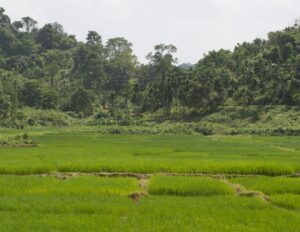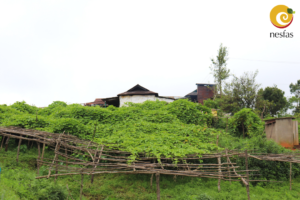An ALC workshop on problem-solving, objective setting, and community work plan was conducted on February 18, 2022, at Sohmynting Community Hall, West Jaintia Hills. ALC members of Larnai, Lumtrep, Ksehrynchang, and Sohmynting of West Jaintia Hills District were all present in the workshop that was conducted by NESFAS along with Social Service Centre (SSC) and Society for Urban and Rural Empowerment (SURE). This workshop is part of the project “Empowering Indigenous Communities through Agroecology Learning Circles (ALCs) for resilient, integrated and innovative natural resource management” supported by MBMA and funded by the World Bank under the Meghalaya Community Led Landscape Management Project (CLLMP).
The workshop was aimed for the community members to come together and share the issues and problems they face in the day-to-day farming activities. It sought to document traditional knowledge and practices from knowledge holders. One main objective of the workshop was to identify gaps and problems in the current farming practices and to develop/come about with a better work plan for the livelihoods of the community while prioritising agroecological problems and solutions.
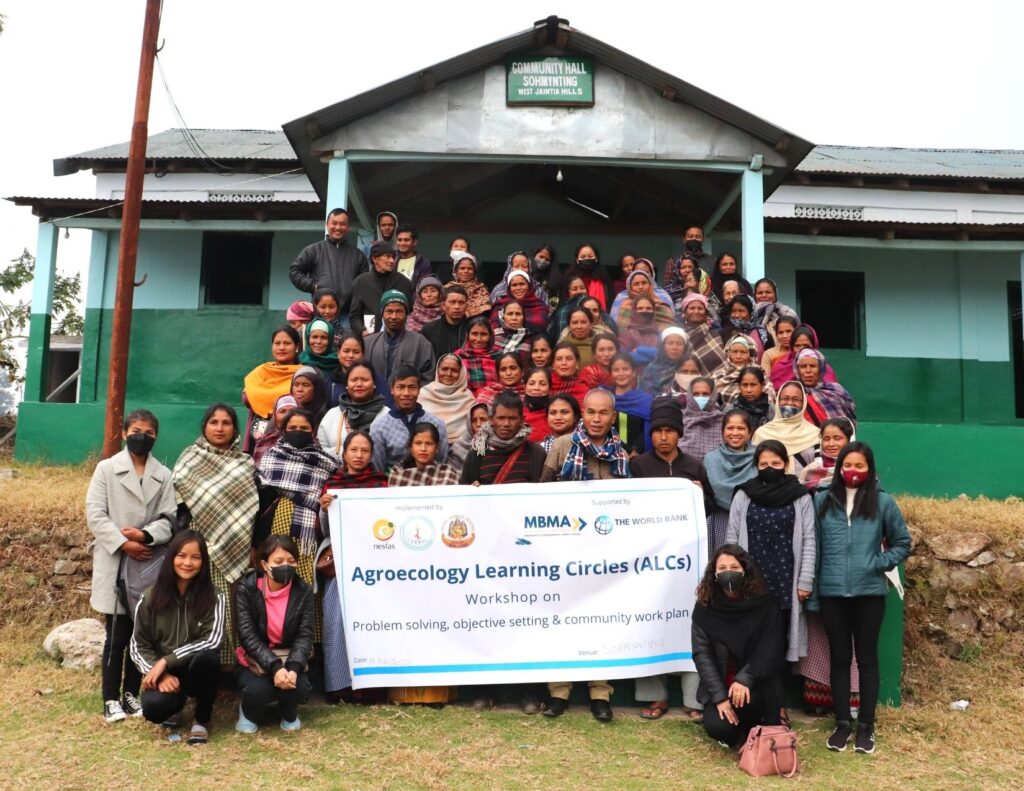
The workshop started with an introductory session amongst the ALC members. After which, they were grouped into clusters/teams where they discussed their issues and problems related to soil, seeds, pests, and production systems that they faced daily. Following a thorough discussion, the farmers presented that soil erosion and degradation of soil quality due to intensive use of chemicals were some of the challenges they faced with regards to their existing farming system. This led to unhealthy crops that dry out due to the dryness of the soil. During winter seasons, the problem is intensified due to lack and shortage of rain, making the soil even drier.
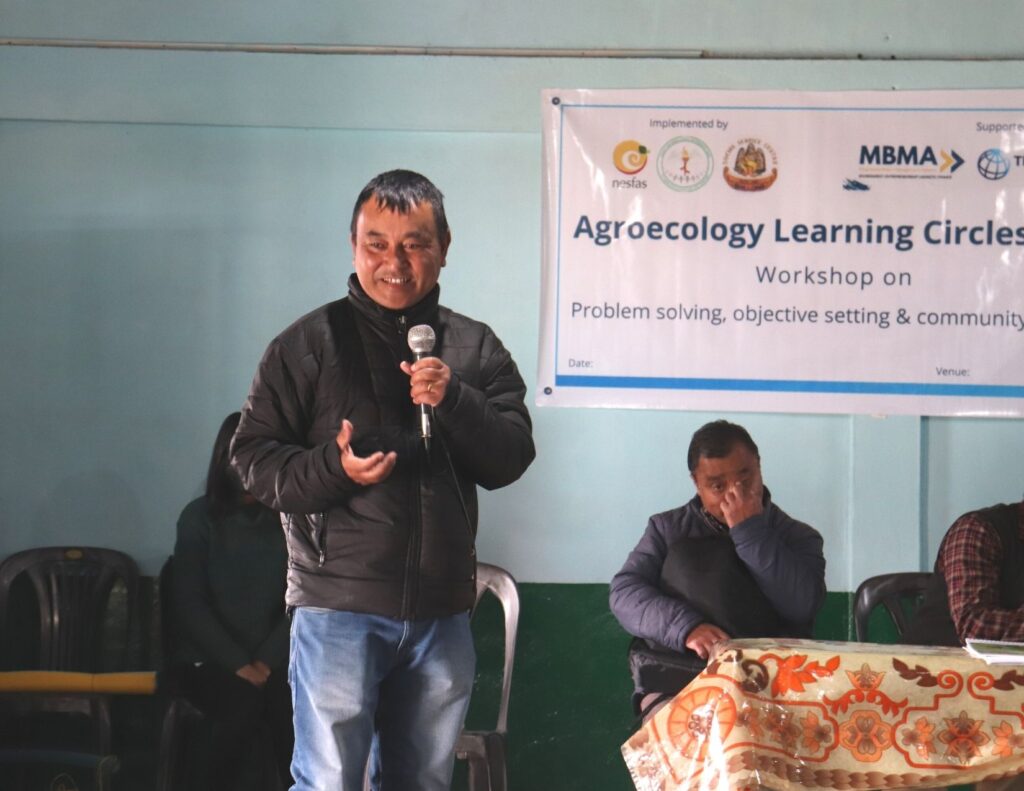
The participants as well as the facilitators present in the workshop came up with some of the following solutions to tackle the problem faced by the farmers regarding the dryness of the soil:
-
Adding dry leaves for composting will help the soil from becoming dry.
-
Adding biomass along with manure such as pig dung and cow dung to increase the depth of the topsoil for better moisture retention.
-
To avoid leaving fallow land as much as possible.
Planting of crops in one’s backyard during winter where wastewater from home can be used for irrigation was also discussed: “I follow my method (planting in his backyard/garden) as there is sufficient water for the plants to grow. This method works well, especially during the winter season”, remarked Kong Iohijingkyrmen Kyndait, community fellow from Sohmynting.
A Community Work Plan was also developed after thorough discussions and the communities went back in agreement to go about with the experiments that were devised under the work plan:
“As a member of the ALC, I feel grateful to have witnessed the programme as it has given us as farmers a lot of benefits and with all the information I had received, I will be able to implement them in my community”, added a delighted Kong Pynhunmon Kam, ALC member, Lumtrep community, after the workshop.
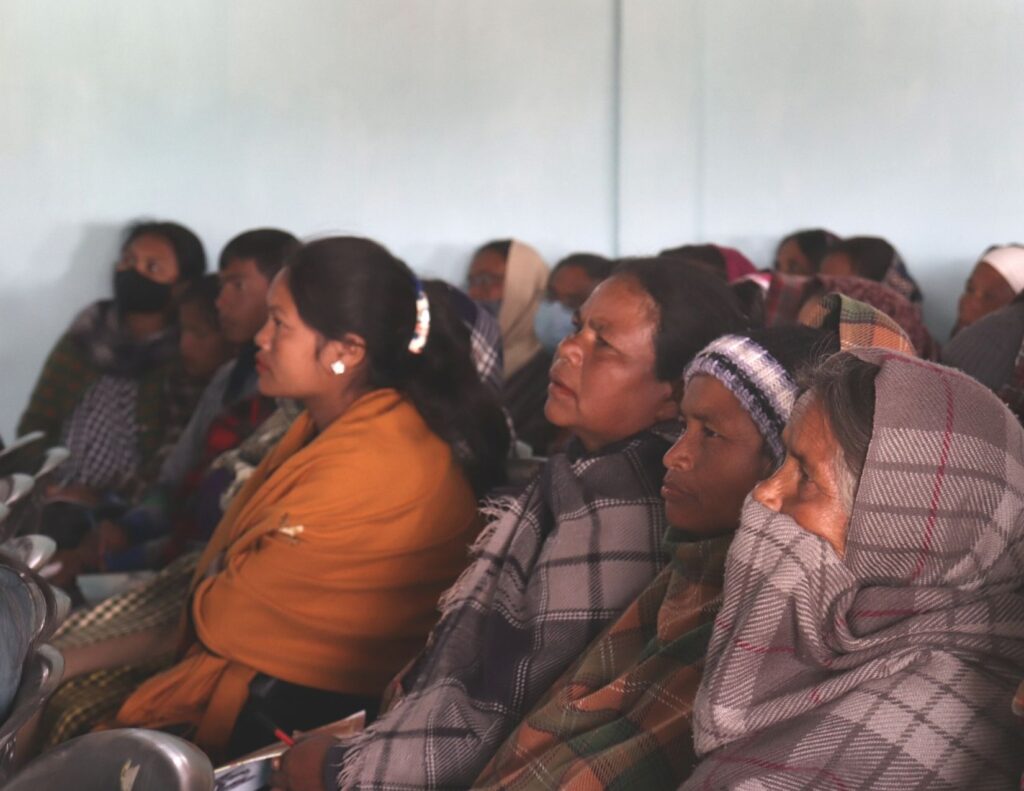
There is much optimism that the formation of ALC groups at various communities supplemented by the Community Work Plans will encourage and uplift traditional farming among the indigenous peoples of Meghalaya.
“I feel blessed to have been able to witness the programme and as a farmer I feel there is a need to uplift traditional farming and with all the solutions I received today I will take it forward to implement in my community.” expressed Bah Sakhiatlang Shadap, custodian farmer from Larnai community.



